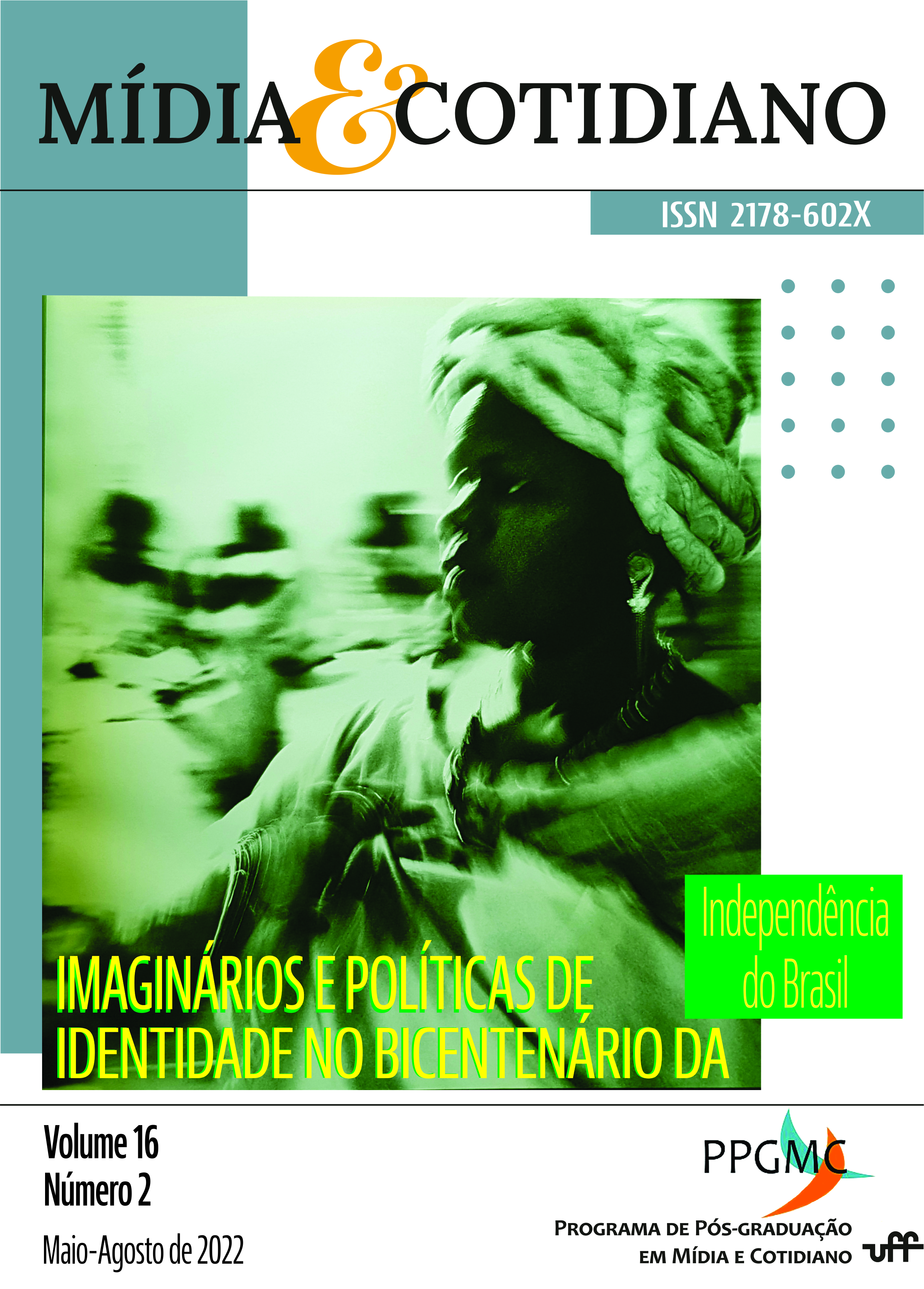The importance of streaming for documentary during the Covid-19 pandemic: a conversation with filmmaker Cristiano Burlan
DOI:
https://doi.org/10.22409/rmc.v16i2.52604Keywords:
Cristiano Burlan, Interview, Documentary, Covid-19, Conversation CinemaAbstract
Audiovisual production and distribution were seriously compromised during the period of isolation resulting from the policies of social distancing because of Covid-19. With the movie theaters closed, several directors had to adapt and found in streaming the possibility of projecting their work. The screens that were already seen as a reality for the cinema, assumed a leading role, showing themselves as an alternative with free access and more democratic distribution. The following interview shows the importance of documentary in the Covid-19 period, which found in digital its permanence of representation of the world in which we live. The conversation with the filmmaker Cristiano Burlan brings up the challenges in promoting the films during the pandemic period and the possibilities that the filmmakers found so that their films could be seen and debated. During the interview, Burlan spoke about the trilogy of grief, femicide and social problems, themes that are very present in his films. According to the filmmaker, no matter how much personal motivation there is, the creation process takes place in the encounter with the other.
Downloads
References
ANDRADE, Vinícius. Cinema ameaçado? Como a pandemia revolucionou o lançamento de filmes. Notícias da TV – Mercado. 02 de jan. 2021. Disponível em: <https://noticiasdatv.uol.com.br/noticia/mercado/cinema-ameacado-como-pandemia-revolucionou-o-lancamento-de-filmes-48741?cpid=txt>. Acesso em: 02 de ago. 2021.
AVELLAR, José Carlos. O vazio do quintal In: Eduardo Coutinho. OHATA, Milton (org.). São Paulo: Cosac Naify, 2013, p. 250-282.
BRAGON, Ranier. Brasil registra 1.338 feminicídios na pandemia, com forte alta no Norte e no Centro-Oeste. Cotidiano. Folha de S. Paulo, 06 de jun. 2021. Disponível em: <https://www1.folha.uol.com.br/cotidiano/2021/06/brasil-registra-1338-feminicidios-na-pandemia-com-forte-alta-no-norte-e-no-centro-oeste.shtml>. Acesso em: 03 de ago. 2021.
GUZMÁN, Patricio. Filmar o que não se vê: um modo de fazer documentários. Edições Sesc: São Paulo, 2017.
NICHOLS, Bill. Introdução ao documentário. Papirus: Campinas, 2012.
OHATA, Milton (org.). Eduardo Coutinho. São Paulo: Cosac Naify, 2013.
PARANAGUÁ, Paulo. A verdade da filmagem. In: Eduardo Coutinho. OHATA, Milton (org.). São Paulo: Cosac Naify, 2013, p. 14-21.
Downloads
Published
How to Cite
Issue
Section
License
Aviso de Direito Autoral Creative Commons
1. Política para Periódicos de Acesso Livre
Autores que publicam nesta revista concordam com os seguintes termos:- Autores mantém os direitos autorais e concedem à revista o direito de primeira publicação, com o trabalho simultaneamente licenciado sob a Licença Creative Commons Attribution que permite o compartilhamento do trabalho com reconhecimento da autoria e publicação inicial nesta revista.
- Autores têm autorização para assumir contratos adicionais separadamente, para distribuição não-exclusiva da versão do trabalho publicada nesta revista (ex.: publicar em repositório institucional ou como capítulo de livro), com reconhecimento de autoria e publicação inicial nesta revista.
- Autores têm permissão e são estimulados a publicar e distribuir seu trabalho online (ex.: em repositórios institucionais ou na sua página pessoal) a qualquer ponto antes ou durante o processo editorial, já que isso pode gerar alterações produtivas, bem como aumentar o impacto e a citação do trabalho publicado (Veja O Efeito do Acesso Livre).


